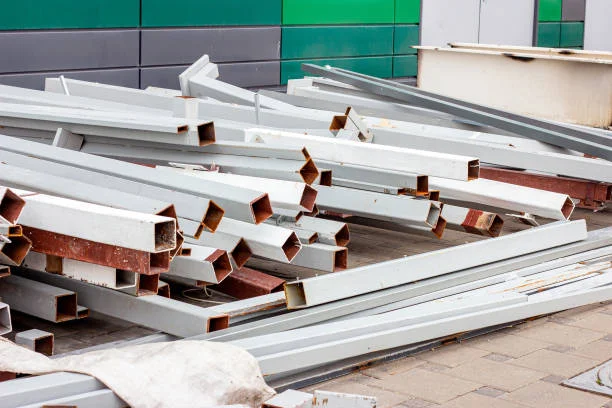Using steel poles for lighting, power distribution, and other applications may help reduce maintenance costs. Steel doesn’t experience rot, warping, or other damage common with wood and concrete poles. Manufacturers and installers also use various techniques, such as cathodic protection, to prevent rusting and increase resilience against environmental elements. Here are a few ways steel poles help reduce maintenance costs:
Your next favorite read is just a click away—check out related posts.
Enhanced Resilience
Steel poles offer enhanced resistance to weather, pests, and rot. The poles are also treated through hot-dip galvanization or powder coatings, which help protect them against rust and corrosion. Galvanization lasts for several decades, eliminating the primary issue with metal poles. Steel poles also don’t require repainting because the galvanized finish seals the metal.
Installers may use cathodic protection, particularly for steel poles that are in direct contact with the ground. The steel pole is made a cathode in an electrochemical system by connecting it to an external anode and passing a direct electrical current. In electrochemical cells, oxidation occurs at the anode, where the metal loses an electron to the surroundings. This process is what causes corrosion. Allowing the steel pole to gain an electron and become a cathode helps prevent it from corroding.
Steel poles are also more resistant to heat, cold, and other harsh environmental conditions than wooden posts. They can be used in locations that receive heavy rainfall or salty air, such as installations near oceans and saltwater lakes. Unlike wooden poles, steel isn’t damaged by termites, ants, moisture, or humidity changes. Its increased resilience reduces the frequency of repairs and replacements, lowering maintenance costs.
Long-term Durability
Choosing steel poles for your project provides a long-lasting solution that meets both current and future needs. Galvanized and cathode-protected steel poles can last for many years without requiring extensive maintenance. Steel retains its structural integrity over time and rarely cracks or bends. Engineers calculate the ideal tensile strength based on the intended application, installation conditions, and environmental forces. Using steel reduces maintenance costs by minimizing expenses related to inspection visits and repairs. Wooden poles usually require regular checks for rot, decay, and pest damage, which are not necessary in steel installations.
Steel’s flexibility allows poles to be strengthened in areas with higher wind forces or for applications involving heavy accessories. Once installed, the poles usually don’t need replacement for several decades, and the worn-out components can be recycled or repurposed. They are also more resilient to knocks and bumps by people and animals, making them suitable for traffic lighting poles and other high-traffic applications. The material is suitable for long-term investments and installations, such as power distribution and street lights in commercial and residential developments.
Reduced Downtimes
Steel poles have greater structural integrity and remain secure on the ground throughout use. They resist winds, ground shifts, flooding, and other forces, resulting in reduced risk of failure. Catastrophic failures can be costly, as they often require major repairs and replacements, in addition to disrupting service. Steel poles provide enhanced reliability in the harshest locations, resulting in fewer outages and a reduced need for inspections and repairs.
Since they require less maintenance, steel poles help reduce operational downtime. Municipalities and utility companies often do not have to perform regular checks and repairs, which can lead to power supply disruptions. Fewer service interruptions also lowers labor costs incurred when addressing pole-related issues. When maintenance is required, their flexible design makes access to the steel poles and their attachments convenient.
Routine pole inspections are more likely to be completed faster due to the easy access and fewer checkpoints. Installers can also add sensors that facilitate remote monitoring of pole conditions. Reduced maintenance and downtimes contribute to lower life-cycle costs of using steel poles compared to wood and concrete. Steel also offers enhanced reliability, a longer lifespan, and design efficiency, resulting in cost savings for utilities and customers.
Start Using Cathodic Protection Today
Steel poles are vulnerable to rusting unless they are protected through galvanization, coatings, or other techniques. Working with experienced manufacturers enables you to design and fabricate high-strength, galvanized steel poles tailored to your project. Installers may also use electrochemical systems to cathode-protect your poles, further preventing corrosion. Speak to a utility systems supplier today to find out more about cathodic protection and other ways to preserve steel poles.
Unlock insights in our related posts on Management Works Media—discover what you didn’t know yet!






